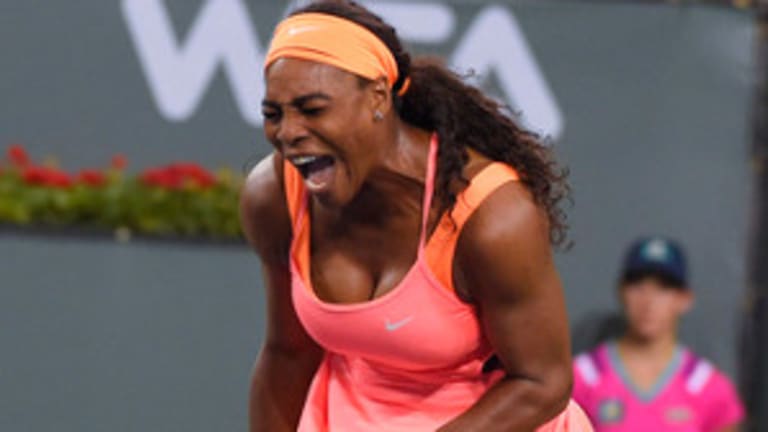As Serena Williams walked through the tunnel and onto the stadium court at Indian Wells on Friday night, she wasn’t sure what she was going to hear. The last time she had been in this position at the BNP Paribas Open was in 2001, as a 19-year-old, and she had been blindsided by a wall of boos from an angry audience. The experience was traumatic enough to keep her away for 14 years.
This time Serena began with the crowd blocked out; as she entered, two headphones were pressed tightly against her ears. She said she had been anxious—something she doesn’t often admit to being—about this moment, and that she had even spent an extra day in Los Angeles before heading out to the desert to practice.
“To be honest,” Serena said on Thursday, “I was a little nervous to come out here. In the beginning I was like, ‘What was I thinking?’ I had to kind of overcome that hurdle.”
The final hurdle was confronting the crowd that had kept her away for so long. When her name was announced and the cheers began to swell, Serena took off her headphones. The standing ovation washed over her. A “Welcome back Serena” sign was hoisted in the upper deck. John McEnroe and tournament owner Larry Ellison stood to clap in the front row. By the time Serena had reached the sidelines, she was in tears.
“I think they were tears of just being overwhelmed,” she said later. “At that moment I just felt so good to be out there. I felt like I made the right decision and I knew I wanted to do it. But up until that moment, I didn’t really know if it was the right thing to do.”
After her entrance, Serena still had to get through a tough, tricky, sometimes not very pretty two-hour match against Monica Niculescu. The highly vocal Romanian played her part in the drama well. When her name was announced a few seconds before Serena’s, Niculescu walked out smiling widely. The world No. 68 doesn’t find herself in too many main stadiums, let alone in situations like this one. Niculescu, as both a player and an observer of the spectacle around her, was ready to savor the moment.
Grunting and squeaking with every swing, she did what she does best: disrupt. Her slice forehand is as hard to handle as it is unorthodox, and Serena, who had never faced her before, spent most of the match pulling up on the ball just to get it over the net. Williams, after wiping away the tears and composing herself, went down 0-2 to start. While she eventually escaped 7-5, 7-5, she was never allowed to settle into her natural game.
“Boy, she was interesting,” Serena said of Niculescu. “I just never got the same ball. I just wasn’t able to get my rhythm today. I’m just glad to get through that match. It was definitely a super-tricky one for me.”
In the end, after all of the build-up, Serena wouldn’t let herself go out in her opening round.
“I just said, ‘You’re not going to lose this match. You have to figure out a way to win it.”
